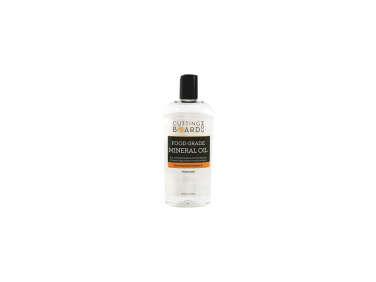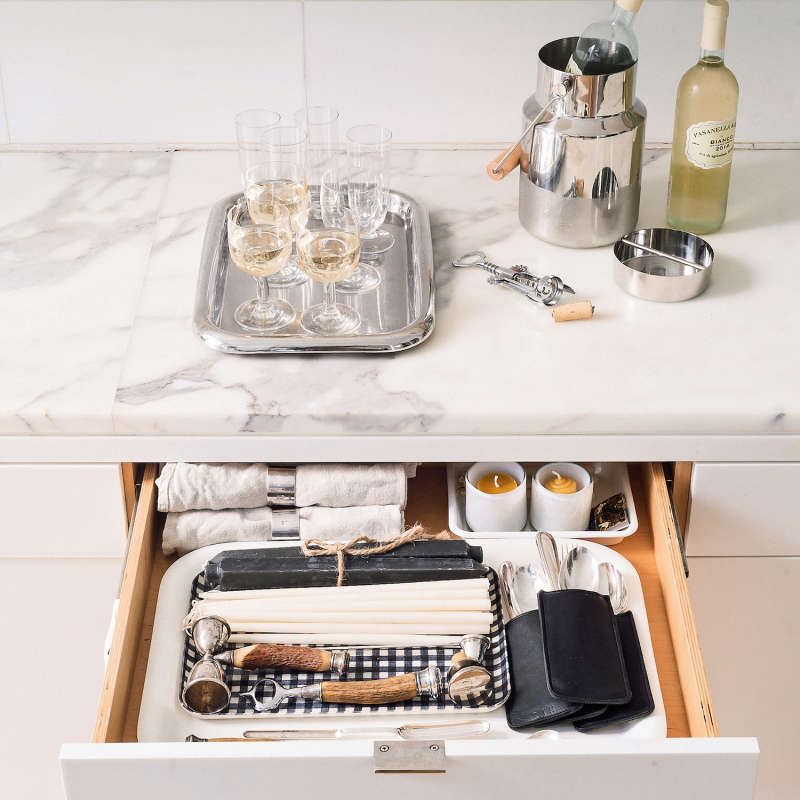The more you learn about soapstone countertops, the more you’ll wonder why you don’t have them yourself. In fact, why doesn’t everyone have a soapstone countertop? That’s how beautiful and low-maintenance they are.
To get some tips about caring for a soapstone countertop, we asked Vermont Soapstone, a company in Perkinsville, Vermont, that launched in 1856—which makes it the country’s oldest supplier of soapstone. Back then they made rustic items such as soapstone bed warmers and wood stoves; while they still make bed warmers, today they mostly specialize in flooring, sinks, and countertops. We spoke with installation manager Madisyn Watson, who advises customers how to care for their new soapstone products. It was a short conversation because, as we said, it’s low-maintenance!

How do you treat a new soapstone countertop?
There are a few steps to take after your new countertop is installed, says Madisyn. “I tell customers to wait about 24 hours to let any dust residue settle. Then you brush off the surface and wipe on a good coat of mineral oil using a clean rag. There’s no need to let it sit—soapstone is nonporous, so the oil won’t sink in.” Once your countertop is evenly coated—that is, the same dark charcoal color all over—you can wipe away any excess oil with a clean rag or paper towel.
Do I need a certain type of mineral oil?
“No, there’s no special type to look for,” says Madisyn. You’ll find mineral oil in any hardware store or pharmacy; it’s nontoxic, and not harmful if ingested. You can pick up a 12-ounce bottle for $9.99 at Amazon.

How often do I reapply the oil?
For the first few months, your new countertop should be oiled about once a week. After that, it’ll depend on much you use the kitchen and how often you clean the countertop (which removes the oil). “You’ll find your own pattern,” says Madisyn. “The mineral oil will come off faster for people who cook every day, compared to someone who eats out regularly.” Madisyn says that the average homeowner adds oil about once a month or every two to three months. “Mostly, it depends on how dark you want the stone to be. Un-oiled soapstone is a light gray, while oil brings out a rich black shade. What’s your preference?”
Her other piece of advice: If you notice that water isn’t beading on the surface, it’s probably time to reapply oil.

What do I use for daily cleaning?
Since soapstone is nonporous, it resists bacteria and doesn’t stain. It’s chemically neutral, which means that acidic foods like lemon juice won’t cause blemishes or the etching you get with marble. And it’s heat-resistant, so no scorch marks. Usually, all you need to clean it is a sponge dipped in soapy water. To attack food residue, feel free to use an abrasive cleanser such as Ajax or whatever else you have around. “Nothing’s going to hurt the stone,” assures Madisyn. And if you see any blemishes, you can just remove them with a coat of oil.
Uh-oh, there’s a scratch on my countertop. Can I get rid of it?
Because soapstone is softer than, say, granite, it is possible to scratch the surface or nick an edge. But that’s easily remedied. “I suggest keeping a worn piece of sandpaper under the sink,” Madisyn says. “If you see a small scratch, just rub the sandpaper over the area to even it out.” She recommends a fairly coarse 60- or 80-grit sandpaper, but points out that a worn piece will be more gentle than a new one. (And going forward, be sure to protect your countertop by always using a cutting board.)

Really, that’s all I need to know?
That’s it! Durable and forgiving, your soapstone countertop will just keep improving with age (and will probably outlive you). You won’t regret investing in a natural stone with timeless good looks.
For more on the care and keeping of soapstone, see Vermont Soapstone’s handy guide.
Read more on soapstone here:
- Remodeling 101: Soapstone Countertops
- Remodeling 101: A Primer on Kitchen Countertops
- Kitchen of the Week: Hudson Valley Farmhouse Kitchen Reborn
Finally, get more ideas on how to evaluate and choose your kitchen countertop in our Remodeling 101 Guide: Kitchen Countertops.





Have a Question or Comment About This Post?
Join the conversation (11)